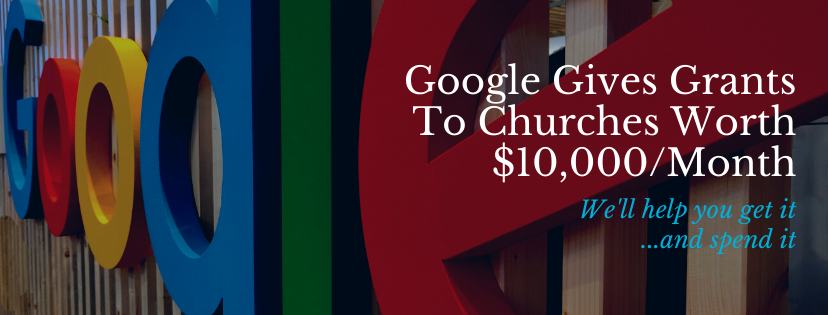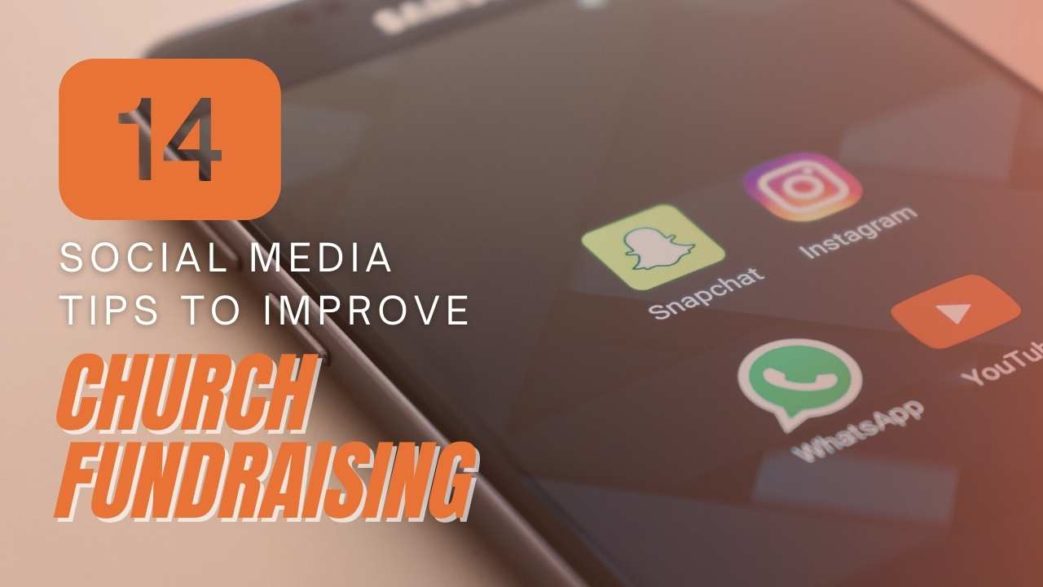Estimated reading time: 10 minutes
Most churches are always looking for ways to improve church fundraising. Luckily, social media is a free and invaluable tool to help you do just that.
The key is learning what type of content to post and how to post to get the most visibility and engagement.
While people want to give, you have to give them a relatable reason. When you do that, platforms like Facebook and Instagram can help your church meet its financial goals easier.
Table of contents
- 1. Promote Fun Events
- 2. Use Engaging Images
- 3. Post Regularly About Your Fundraising Event
- 4. Encourage Sharing
- 5. Use Storytelling
- 6. Create A Explainer Video
- 7. Make The Most Of Ads
- 8. Keep Track Of Your Progress
- 9. Post Testimonials From Those You’ve Helped
- 10. Thank Donors By Name
- 11. Post At The Optimal Times
- 12. Allow Donations In Multiple Ways

1. Promote Fun Events
The first step is simple. Promote your events. Any time your church has a fundraising event, post about it. If you’ve had similar events before, add pictures from the previous events.
The more fun you can make your fundraising event seem, the more people you’ll have not only participating, but sharing your posts. You can even set up an event on Facebook for people to RSVP. Seeing that friends and family are attending helps make others want to come too.
Ideally, go beyond just a quick title and image, though. To really promote your fun church fundraising events, create a page with more details on your church website or write a blog post. Link your social media post to that page.
People enjoy having more details. Plus, if it’s on your church website too, you’ll also get exposure for your fundraising efforts for anyone who visits your site versus social media.
2. Use Engaging Images
Images are a critical if you want to improve church fundraising. Think about it this way. You’re scrolling through social media and see two different images:
- A solid color background with some bold text that says “Check out our church fundraiser”
- A picture of a group of people laughing with some text that says “Come join our church family to help raise money for XYZ”
Which are you more likely to notice and interact with? Most people would choose the latter because it instantly makes your church seem more welcoming and relatable.
Plus, seeing an image of people from your church helps showcase the tone and personality for your church. If you can tie in an image that relates more to your fundraiser, even better. A single engaging image can explain your purpose in a split second, grab more attention, and lead to more sharing.
Ideally, real images work better than stock photos. Of course, if you don’t have images of a previous event or members aren’t keen on being used in your photos, take pictures of your church, local community, beautiful scenery or anything else that would attract attention to your post.
To help you out, we’ve got a handy guide to using the right types of images on Facebook. These tips also work well on Instagram too.
3. Post Regularly About Your Fundraising Event
A common mistake that’s easy to make is either posting too little or too often about your event. To improve church fundraising, post regularly. Make each post a little different to stand out more.
The exact frequency really depends on how often your church posts currently. You want to strike a good balance. If you tend to post several times a day, post about your fundraiser once a day. If you only post once a day, consider adding a note about your fundraiser on that post or remind people about the fundraiser every other day.
Since social media users don’t always see all of your posts due to complicated algorithms, it’s important to post regularly. All brands post about upcoming events and important things going on, so your church should do the same. Of course, you’re also competing for visibility against possibly hundreds of friends, family and other pages a user is following.
The key is to make sure you’re not just posting about fundraising. Otherwise, people might not feel like your church’s posts are useful to them. Make sure you mix in useful posts, such as inspirational scripture, snippets from your sermons, interesting blog posts and more.

4. Encourage Sharing
This might sound overly simple, but remind people to share your post. For instance, you might say “Can’t give right now? No problem! Give the gift of sharing by sharing this post with all your friends.”
Not only are you letting people know that you appreciate the time it took for them to stop and interact with your post, but you’re giving them a free way to help your church. The bigger your reach, the better your fundraising efforts.
When your fundraising event is over, make sure you add a final post thanking everyone who donated and everyone who shared your posts. Both groups are equally important to helping your church and community.
5. Use Storytelling
The best way to improve church fundraising efforts on social media is with storytelling. It’s a common brand marketing strategy that involves using relatable stories to pull in customers.
In your church’s case, it’s a way to help people feel as passionately about your church, community and fundraising efforts as you do. Take these two posts for example:
- Help your local community stay warmer this winter by donating to XYZ Church today. We’re buying space heaters for those in need.
- Everyone needs a hero sometimes. Will you be someone’s hero during the cold winter months and give the gift of warmth?
The first does a good job at explaining what you’re doing. But, it’s about as engaging as a textbook.
The second still explains that you’re helping raise money to provide heat to those in need during the winter. But, it goes a step further. It creates a story in the reader’s mind of being a super hero coming to the aid of those in need.
It also does something unique. It instantly boosts a reader’s mood, making them feel like something as small as a few dollars could help make them a hero. That feeling of purpose and happiness makes them more likely to donate.
6. Create A Explainer Video
Everyone knows the cliché about images and 1000 words. So, give your social media followers far more than 1000 words by creating an explainer video about your fundraising efforts.
Videos are beneficial for two main reasons. First, you can do more in 30 seconds to a minute than you could in a single text or image post. Create a slideshow, have members talk about the fundraiser, answer common questions or anything else. Remember, you can create multiple short videos or even link to a longer YouTube video.
Second, videos perform much better on social media. They’re so engaging that Facebook even thought about going completely to video posts.
So, why do videos work better? You can cram a lot of information into a short video. Plus, people remember the content better than they would from text or an image. It’s perfectly fine to add captions or text to your videos, though, as many people watch them with the sound off.
Not sure where to start with creating videos? Try our guide to creating engaging videos people will want to share.

7. Make The Most Of Ads
For the most part, you can improve church fundraising for free. However, if you’re new to social media or just want to expand your reach a little more, social media ads are a great option. While they’re not required, they can give your fundraising efforts the boost you need.
The great thing is ads aren’t that expensive for simple campaigns. Just use a highly targeted approach so you’re not wasting your budget trying to reach everyone.
While Facebook ads tend to be one of the more popular options since it’s the biggest social media platform, other platforms do offer ad options, including Instagram, which is more popular with younger audiences. Consider using ads throughout your fundraising period to reach as many people as possible.
Not only can this help for a single fundraiser, but it can also grow your social media following. As a result, it can help grow your church, both online and offline.
8. Keep Track Of Your Progress
How well is your fundraiser performing? Are your social media efforts helping?
Whether you’re fundraising or not, always keep track of how your posts are performing on social media. This helps you better understand your audience and know what types of posts resonate best. Plus, you’ll learn about the best times to post for the most engagement.
Outside of tracking post performance, track your actual fundraising goals and where they’re originating from. Not only does this help you see how much social media is helping, but it gives you another way to promote your fundraiser.
People love to see the stats on a fundraiser. They like to see the number growing and see how close you’re getting. Set a goal amount and an end date. This creates urgency and makes people interested in seeing if your church reaches the goal in the set time period.
There’s a reason why Kickstarter and GoFundMe work so well. There are set goals and dates. As you start reaching the end of your event, people want to help you reach your goal. Those who might not have donated at the beginning may suddenly add in a little to push you closer to the finish line.
9. Post Testimonials From Those You’ve Helped
Sometimes, people are hesitant to donate because they’re not sure they’re helping anyone. To ease their fears and make your fundraiser easier to relate to, ask people you’ve helped in the past or are currently helping to share a comment about how your church has helped them.
Ideally, create a video collage or several short videos with anyone willing to share their gratitude or experience. You can even ask volunteers to share their experiences too.

10. Thank Donors By Name
While donors can stay anonymous if they want, some people love their brief moment of fame. Consider sharing a quick post with the names of your donors each day or week during your fundraising event. This can be a simple image post with names or a link to your church’s blog if the list of names is longer.
Taking the time to say “thank you” by name means a lot to donors. Plus, it shows those who haven’t donated how grateful your church truly is. It’s a simple gesture, but it’s highly effective. Plus, many donors are likely to share a post that includes their name in it.
11. Post At The Optimal Times
To really improve church fundraising, you need to post at the optimal times. This varies greatly between platforms and your audience. For instance, you might post in the evenings on one platform and the mornings on another.
There are constantly studies being done to find the perfect time, but as you might expect, the times always change. This is another reason to post regularly to reach more people.
Use the following studies to find times that might work best for your church:
- Oberlo: Best Times To Post On Social Media In 2021
- Sprout Social: Best Times To Post On Social Media In 2020
- Social Media Today: Best Times To Post On Social Media In 2020
- How Sociable: Best Time To Post On Social Media
As Buffer points out, take these studies with a grain of salt. Instead, measure your own post performance and perform your own tests. This helps you find the optimal times and days for your audience.
12. Allow Donations In Multiple Ways
Finally, allow donations in multiple ways. Some people prefer to donate directly on social media, if the option is available. It’s quick, easy and they don’t have to leave the platform.
For others, they’d rather not share any financial data on social media, even if it’s supposed to be secure. Instead, they’d rather use your church website or an integrated online tithing solution. You can even set up a simple PayPal donation button if you want.
The more options you offer, the better your fundraising efforts will be. Even if the donation option is on your site, promoting it on social media drives far more traffic to your website.
Ready to improve church fundraising efforts? Start with an amazing church website to provide more details, online donations and more content to share on social media.




